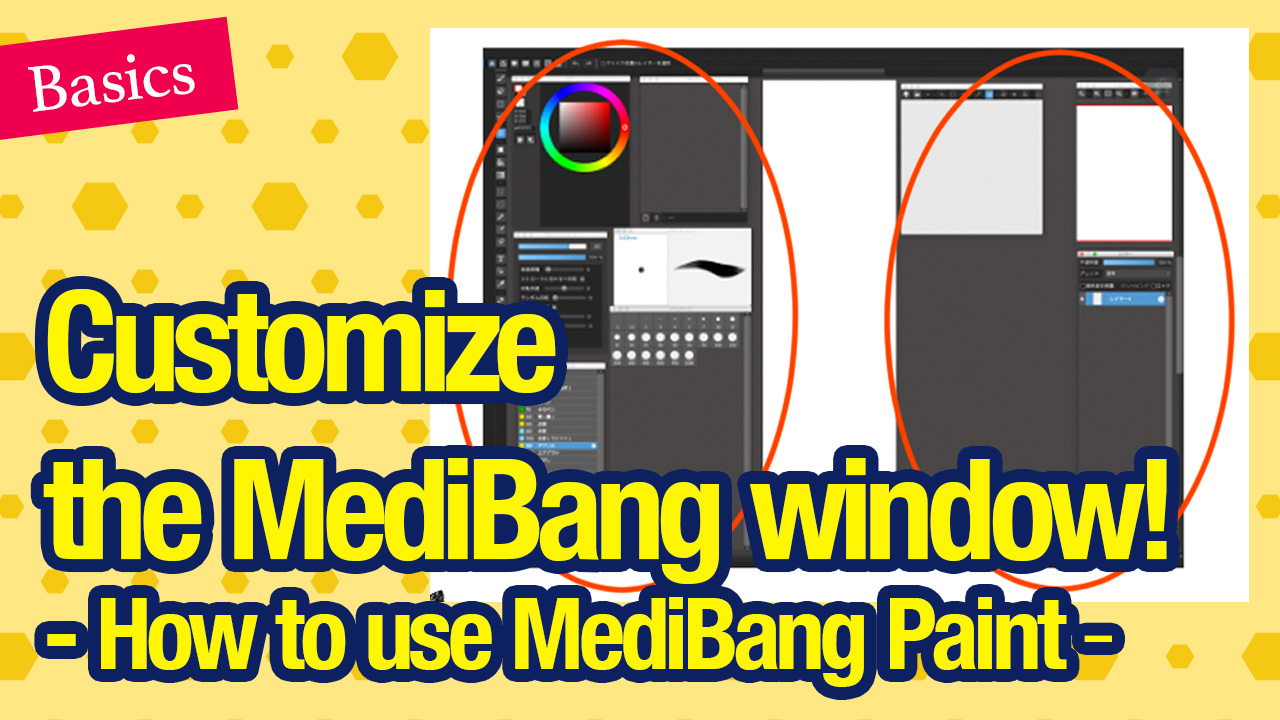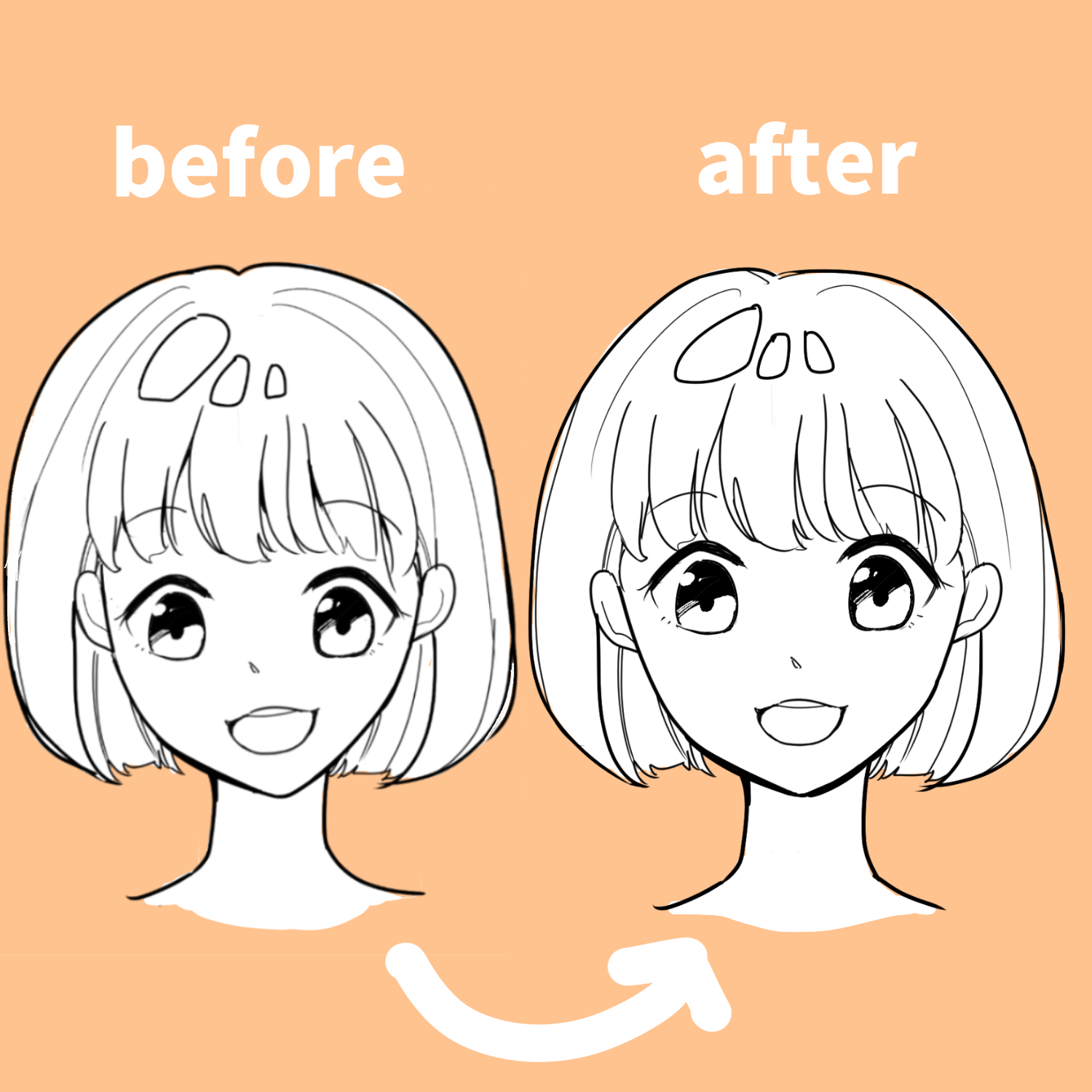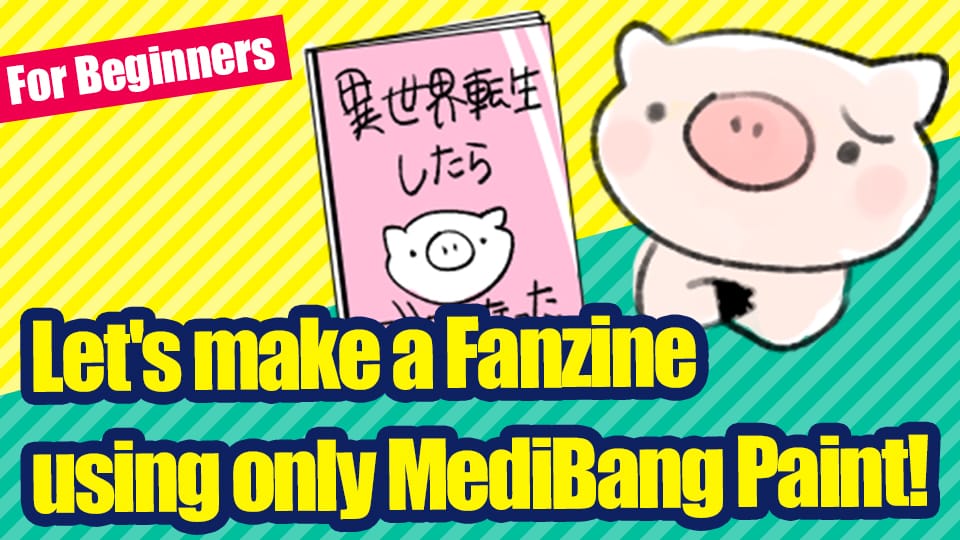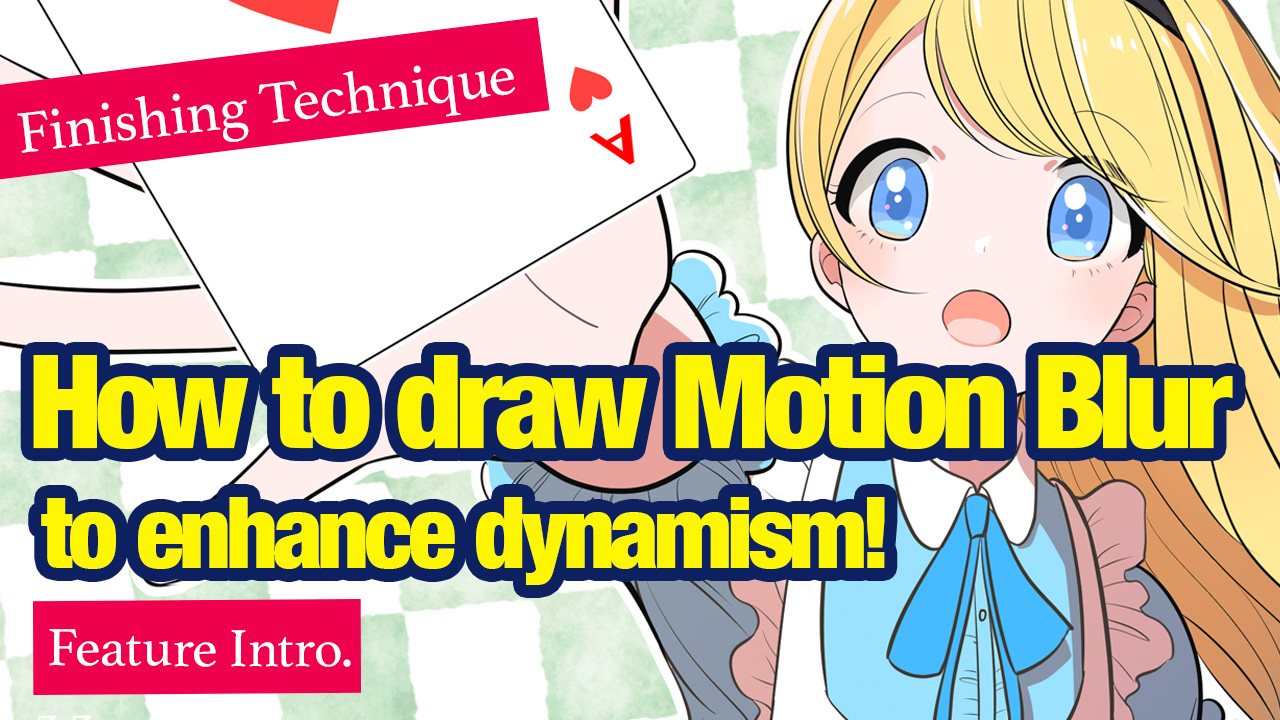2021.05.10
[For beginners] The pen moves forward! Tips from an advertising manga artist on how to create a manga story.
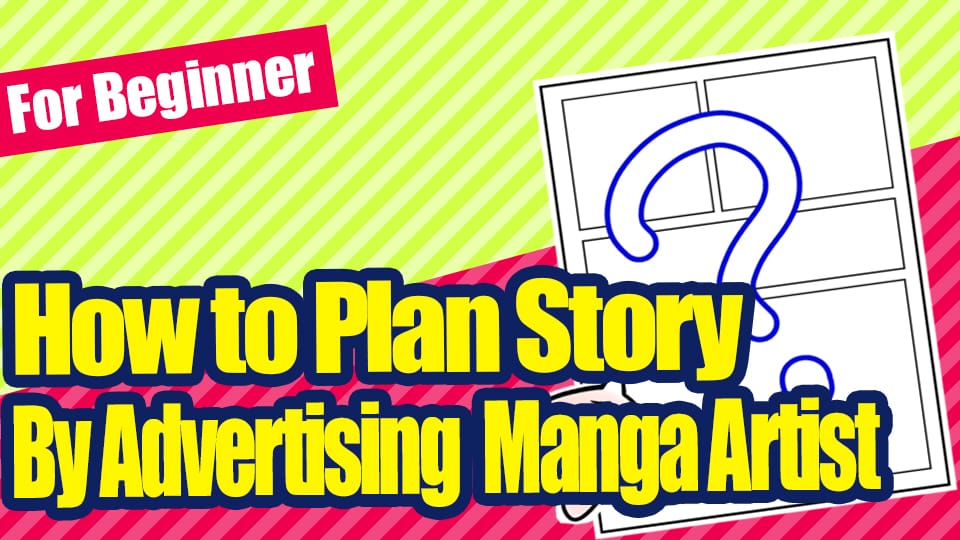
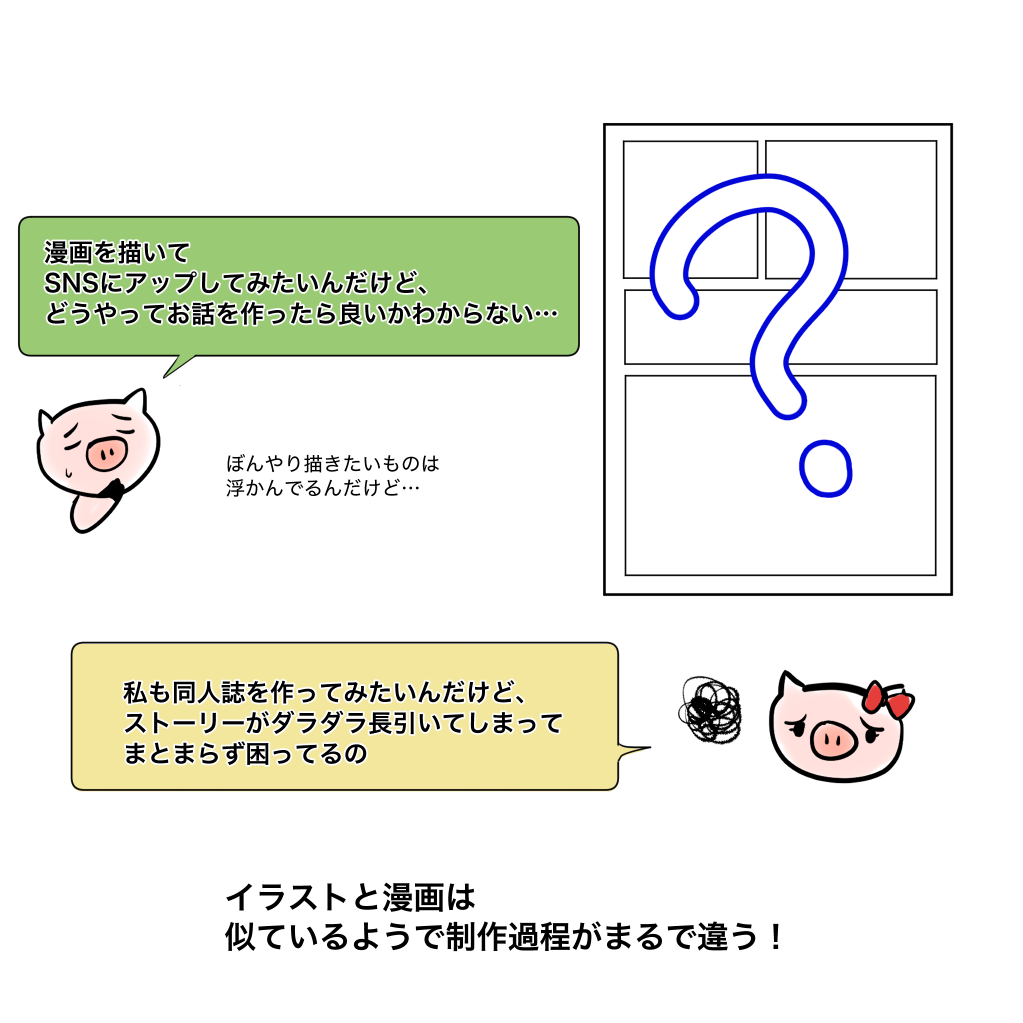
You’ve gotten good at drawing illustrations, and now you want to try drawing manga! I’m sure there are many people who think, “Now I want to draw manga!
However, when you start to draw, you may hit a wall: you don’t know what kind of story to draw, you can’t put the story together, you have a theme or scene in your head that you want to draw, but when you try to make it into a manga, your hand stops.
As an advertising manga artist, I usually have many opportunities to create short manga, and I’d like to introduce some tips on how to create a manga story.
I’d be happy if they could be of any help!
★In this article, I’ll introduce techniques for making short, read-only manga (about 4 to 24 pages).
This article will introduce techniques for making short, read-only manga (about 4p to 24p). Please note that how to make a long manga or a long serial manga will be different.
Index
① Write down the theme or image you want to draw
For example, let’s say you want to draw a manga about a salaryman who picks up a lost puppy.
If you only have a rough idea in your head, you won’t be able to formulate a concrete story.
First, it is important to visualize your brain.
Get a piece of paper and a pen, and without thinking too much, write down as many scenes and images as you can think of about the subject you want to draw.
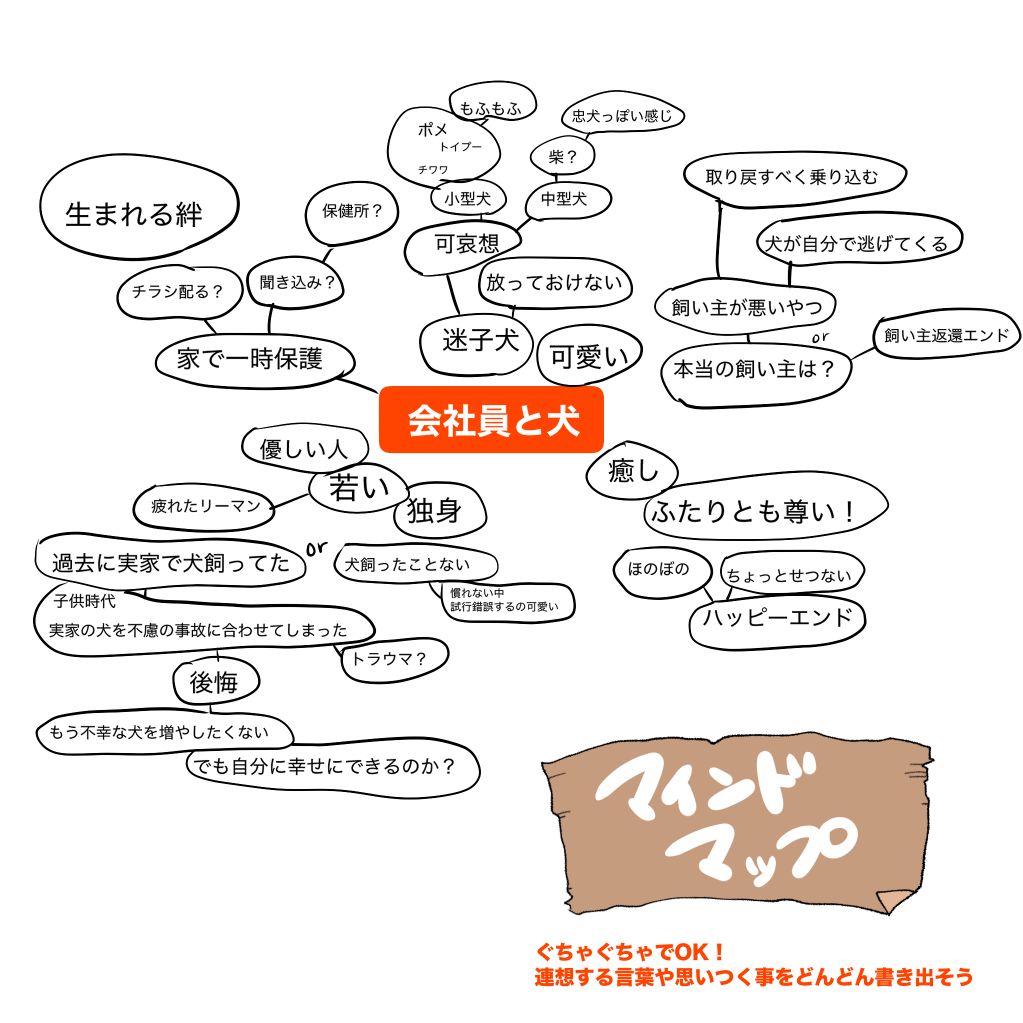
This way of writing, where you branch out from one thing, is called a “mind map”.
It doesn’t matter if it’s a mess.
It is important to make a number of them.
The effect of writing is tremendous, and as you write, more and more ideas will come to you, and you will be able to organize your thoughts.
② Think about which scene you want to depict the most
This is the most important part of this article!
“This is the part of the manga I want people to see the most!”
“This is what I want to express in this manga!”
This is the most important part of this article!
Because the number of pages in a short manga is limited, if you don’t decide on this, you will end up with a manga that has no climax, where you don’t know what you want to say.
If you can’t immediately think of a scene, look at the mind map you wrote out in step 1.
I’m sure you’ll find a scene or sentiment that “sticks” with you the most.
You can try to picture the scene in your mind as if you were watching a movie or drama.

If I were to draw a manga about a salaryman who picks up a lost dog, the scene where the lost dog returns to its owner and then comes back to the protagonist came to mind.
I’d like to make this the climax of the story.
③ Let’s flesh out the climactic scene!
Once you’ve decided on the climax scene, develop the climax scene by describing the events leading up to it and the emotions of the characters.
It’s a classic, but “gaps,” “betrayal (in a good way),” and “surprise” will add depth to the story and draw the reader in even with only a few pages.
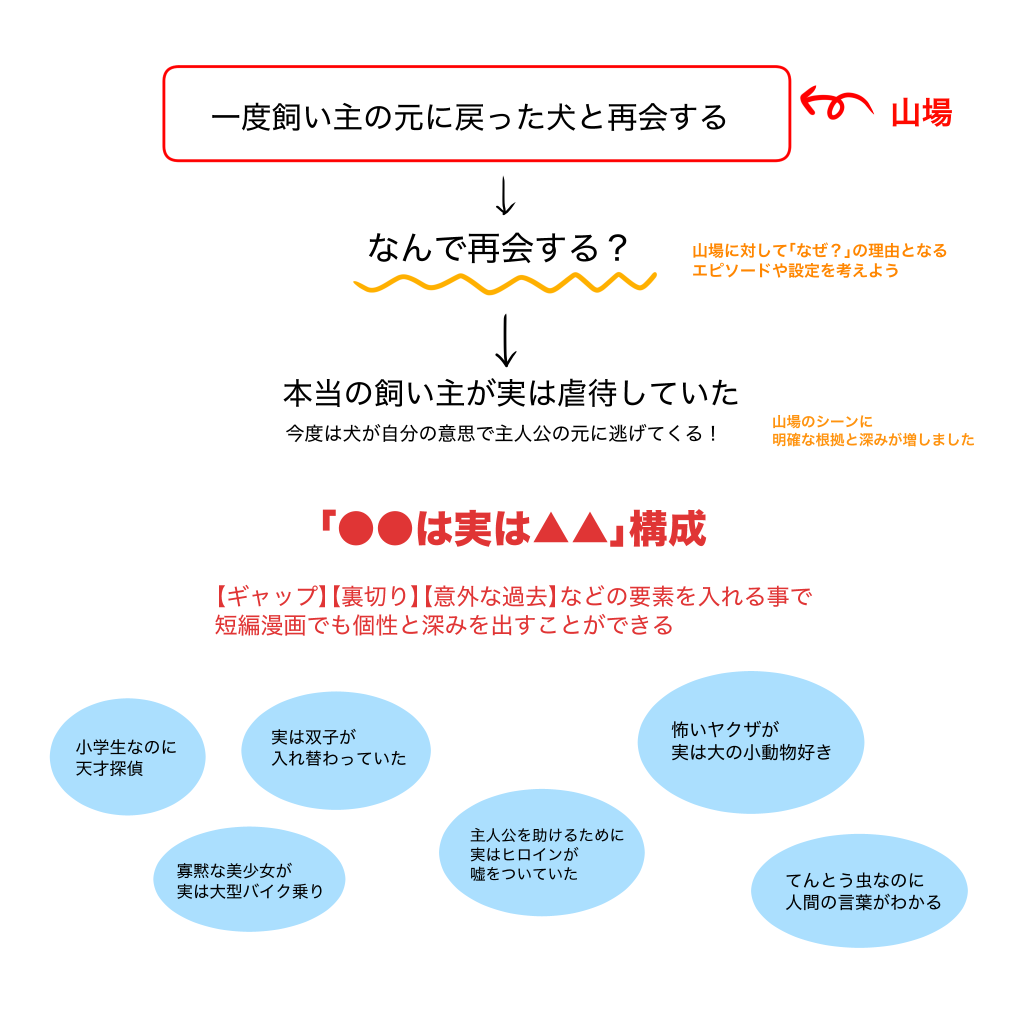
As for the scene where the lost dog comes back to the main character after being returned to its owner, I decided to add the setting that the original owner was actually abusing the dog.
This will add a little spice to the end of the story and a touching element to the reunion with the main character.
It’s an old story, but it’s very effective.
If your story doesn’t seem to be getting off to a good start, try writing down all the gaps you can think of for the characters and scenes you want to portray.
You may find something that fits.
④ Cut down on scenes that don’t relate to the main point!
What? I wrote down so much in my mind map. Did you think?
This is also a very important part of making your manga readable and memorable.
If you are working on a long series, you can add episodes later on, but for a short comic that is a one-shot deal, brevity is important.
As you think about your story, you may find yourself wanting to add this and that, but hold back and cut out the episodes that don’t relate to the main point.
In this way, the theme of the manga will be narrowed down, and the reader will be able to concentrate and easily understand the story.
In the example manga, I had in mind scenes such as “the neighbors loving the dog” and “the interaction with the pet store clerk,” but I decided to forget them because they had little to do with the main plot of the story.
⑤ Let’s organize the flow of the story roughly!
Once you’ve gotten this far, think about the flow of the story from the beginning to the end and write it down.
You don’t need to think about the dialogue at this stage unless you already have it in mind and you definitely want to include it.

This is how I wrote out the sequence of events.
It may not seem like a lot of words, but the number of pages tends to increase rapidly when you start making comics, so this is enough for a short story.
⑥ Think about the specific scenes and dialogues! </h3
Now that the story is pretty much settled, it’s time to finish it.
Now that the story is pretty much settled, let’s think about the scenes (pictures) and dialogues for each scene.
It will be easier to understand if you add to the rough flow written in 5).
After that, you can start working on the frame layout and name.
★The following are some tips on how to use this technique.★
●Let’s narrow down the number of characters.
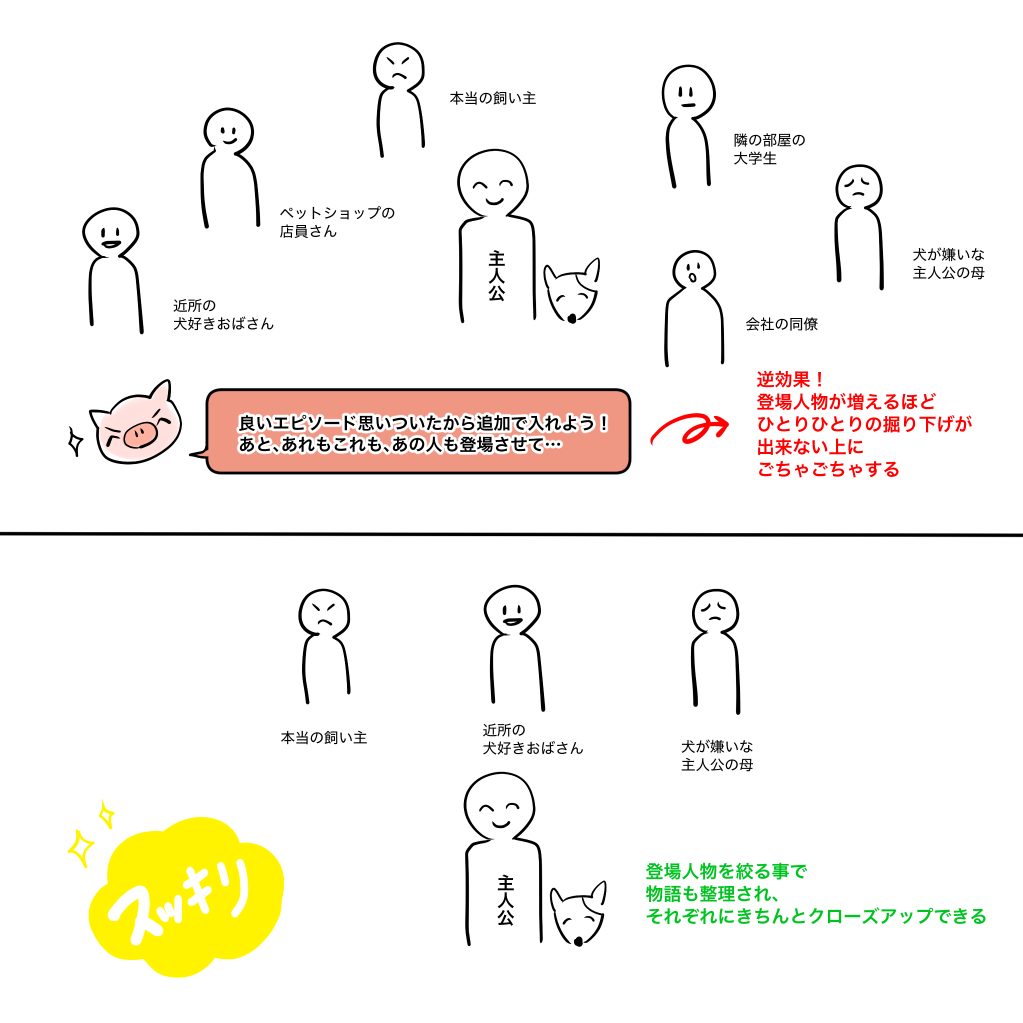
In the case of a short manga, if there are too many characters, the story will become jumbled as a result of the inclusion of each character’s feelings, or there will be too many episodes, and the part you really want to convey will become blurred.
It’s best to limit the number of characters to the main character plus two or three others (excluding mobs).
Incidentally, when I draw advertising manga (manga to promote a company’s products), I limit the number of characters to the main character plus a maximum of two.
●Use a “read between the lines” structure to increase the appeal.
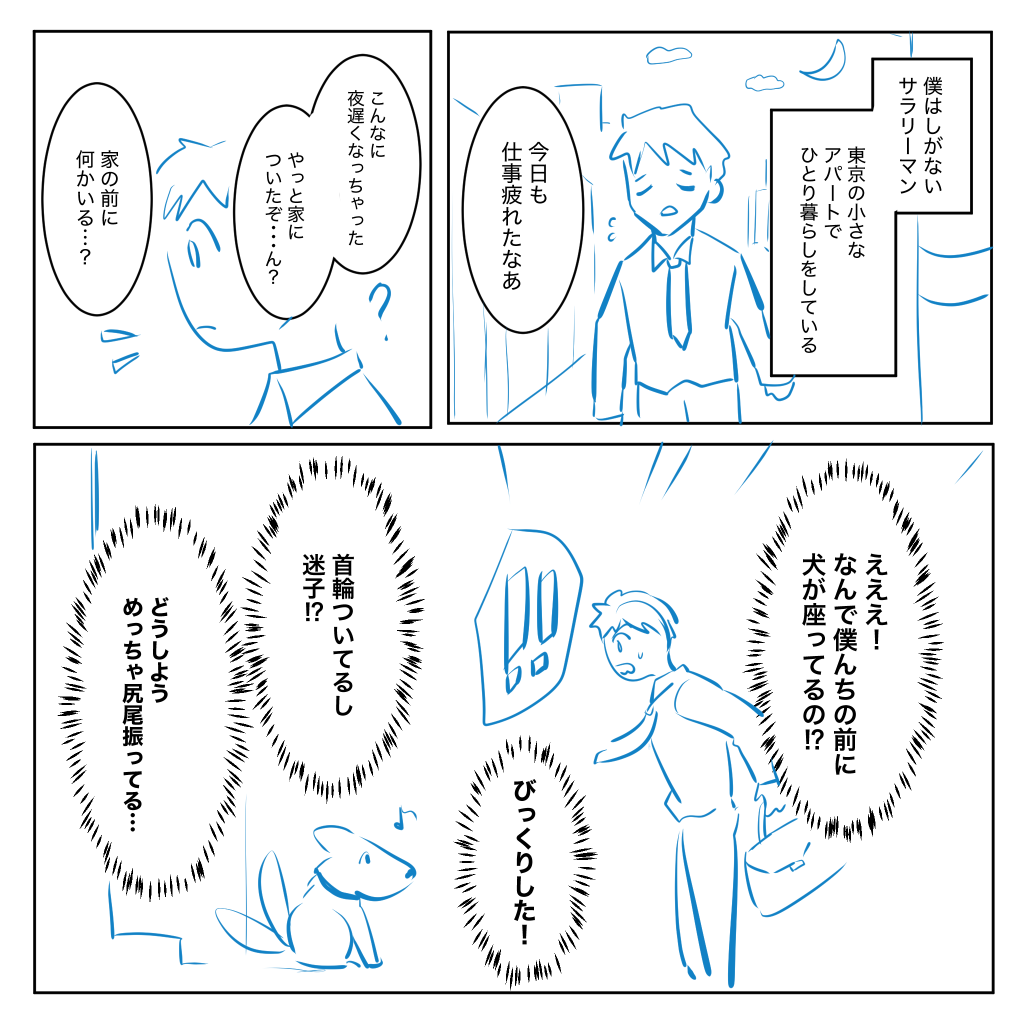
Take a look at this image.
I drew the beginning of the “cartoon about a businessman picking up a lost dog” that I used as an example earlier.
It looks a little hard to read because there are a lot of words in the description, and everything is explained from 1 to 10, even the sentiment.
If you use a lot of text, it gives a gag manga atmosphere.
This is effective when you want to draw a gag manga, but not when you want to create a serious atmosphere.
Since it is a short comic, it is tempting to cram a lot of information into a single page, but if you do this from beginning to end, it will be monotonous and the reader will get tired.
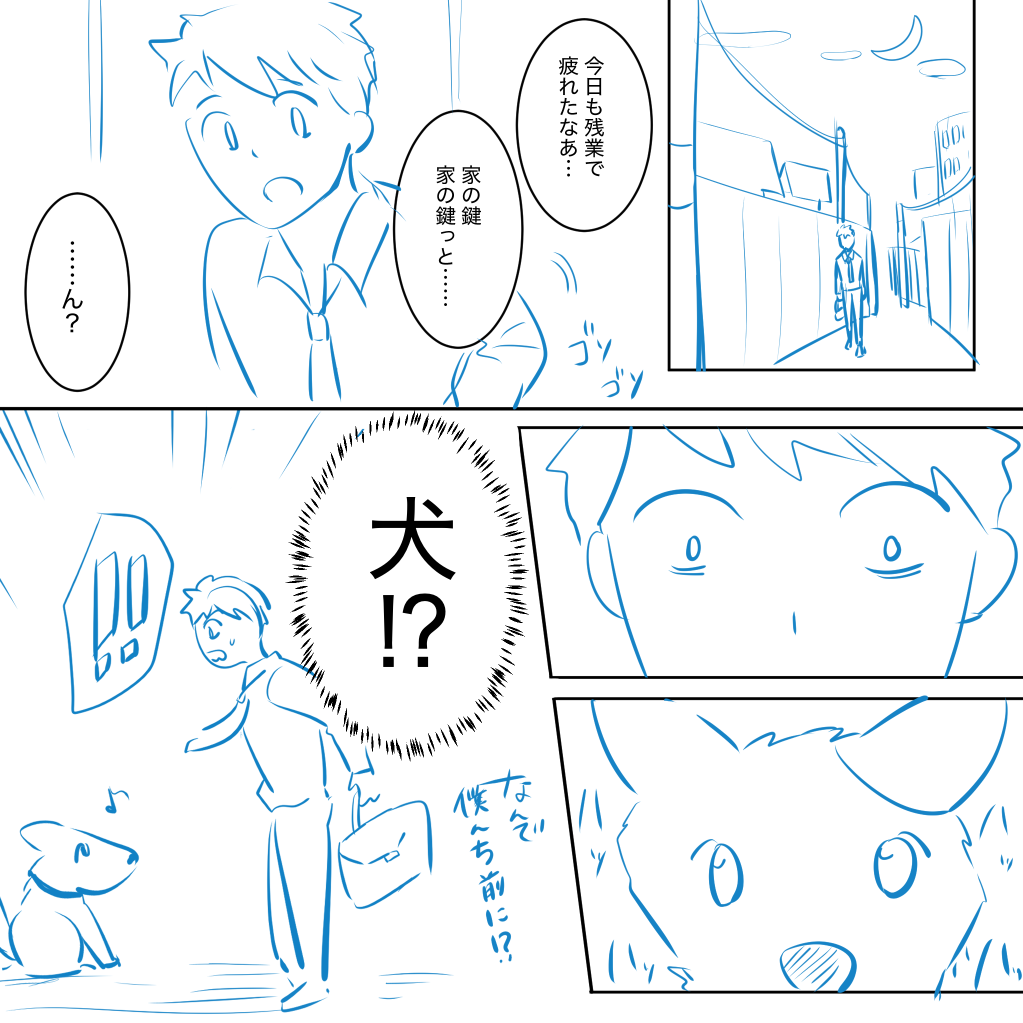
It’s the same scene, but don’t you think the impression has changed a lot?
Even though I cut down a lot of text, I think you can still get a sense of what the scene is about and how the main character is feeling.
Even if I don’t explain everything from one to ten, the reader can imagine the scene from the pictures alone more than I think.
In novels, this is the method of letting the reader read between the lines.
Particularly, for the climax of a scene, you should give top priority to expressing it through pictures rather than words.
You don’t even need to use dialogue.
The reader will be able to imagine the best dialogue in his or her mind.
It’s good to be able to create a manga with a sense of urgency by using both text and pictures to describe scenes.
I have introduced a rough method for creating a story.
The process of creating a story varies from person to person: some people write a novel first and then create a manga, while others already have an image in their mind and start drawing directly without organizing it in words. ……
This is just an example, so please use it as a guide and find the method that is easiest for you.
(Text and pictures by Naoko Hara)
twitter:@nao_comic
\ We are accepting requests for articles on how to use /

